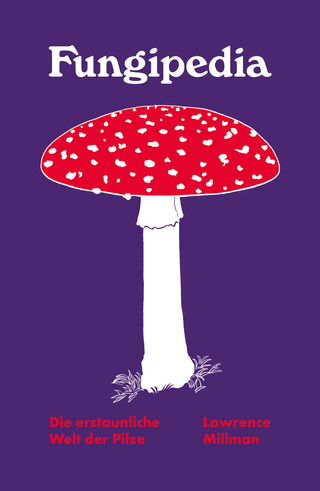
Fungi in the Environment
Cambridge University Press (Verlag)
978-0-521-85029-2 (ISBN)
Fungi are of fundamental importance in the terrestrial environment. They have roles as decomposers, plant pathogens, symbionts, and in elemental cycles. Fungi are often dominant, and in soil can comprise the largest pool of biomass (including other microorganisms and invertebrates). They also play a role in maintenance of soil structure due to their filamentous growth habit and exopolymer production. Despite their important roles in the biosphere, fungi are frequently neglected within broader environmental and microbiological spheres. Additionally, mycological interests can be somewhat fragmented between traditional subject boundaries. This multi-disciplinary volume explores the roles and importance of fungi in the environment. Particular emphasis is given to major research advances made in recent years as a result of molecular and genomic approaches, and in cell imaging and biology. Drawing together microbiologists, mycologists, and environmental scientists, this work is a unique account of modern environmental mycology, and a pivotal contribution to the field.
Geoff Gadd is Professor of Microbiology and Head of the Division of Environmental and Applied Biology at the University of Dundee. S. C. WATKINSON is Research Lecturer in the Department of Plant Sciences, and Tutor in Biology at St Hilda's College, University of Oxford. Paul Dyer is a Lecturer in the School of Biology at The University of Nottingham.
1. Imaging complex nutrient dynamics in mycelial networks D. P. Bebber, M. Tlalka, J. Hynes, P. R. Darrah, A. Ashford, S. C. Watkinson, L. Boddy and M. D. Fricker; 2. Natural history of the fungal hypha: how Woronin bodies support a multicellular lifestyle Gregory Jedd; 3. Environmental sensing and the filamentous fungal lifestyle Nick D. Read; 4. Mineral transformations and biogeochemical cycles: a gomycological perspective Geoffrey M. Gadd, Euan P. Burford, Marina Fomina and Karrie Melville; 5. Mycelial responses in heterogeneous environments: parallels with macroorganisms Lynne Boddy and T. Hefin Jones; 6. Natural abundance of 15N and 13C in saprotrophic fungi: what can they tell us? Andy F. S. Taylor and Petra M. A. Fransson; 7. Berkeley Award Lecture: mathematical modelling of the form and function of fungal mycelia Fordyce A. Davidson; 8. Mycorrhizas and the terrestrial carbon cycle: roles in global carbon sequestration and plant community composition Jonathan R. Leake; 9. Water relations in lichens Rosmarie Honegger; 10. Development of the arbuscular mycorrhizal symbiosis: insights from genomics Jinyuan Liu, Melina Lopez-Meyer, Ignacio Maldonado-Mendoza and Maria J. Harrison; 11. Functional genomics of plant infection by the rice blast fungus Magnaporthe grisea Joanna M. Jenkinson, Richard Wilson, Zachary Cartwright, Darren M. Soanes, Michael J. Kershaw, Amy E. Davies and Nicholas J. Talbot; 12. Exploring the interaction between nematode-trapping fungi and nematodes using DNA microarrays Anders Tunlid; 13. Role of (1-3) glucan in Aspergillus fumigatus and other human fungal pathogens Anne Beauvais, David S. Perlin and Jean Paul Latgé; 14. Plagues upon houses and cars: the unnatural history of Meruliporia incrassata, Serpula lacrymans, and Sphaerobolus stellatus Nicholas P. Money; 15. Fungal species: thoughts on their recognition, maintenance and selection John W. Taylor, Elizabeth Turner, Anne Pringle, Jeremy Dettman, and Hanna Johannesson; 16. Multilocus Sequence Typing (MLST) and Multilocus Microsatellite Typing (MLMT) in fungi Matthew C. Fisher; 17. Fungi in the hidden environment: the gut of beetles Meredith Blackwell, Sung-Oui Suh and James B. Nardi; 18. A saltmarsh decomposition system and its ascomycetous laccase genes Steven Y. Newell, Justine I. Lyons and Mary Ann Moran.
| Erscheint lt. Verlag | 12.4.2007 |
|---|---|
| Reihe/Serie | British Mycological Society Symposia |
| Zusatzinfo | 10 Tables, unspecified; 48 Halftones, unspecified; 42 Line drawings, unspecified |
| Verlagsort | Cambridge |
| Sprache | englisch |
| Maße | 157 x 234 mm |
| Gewicht | 785 g |
| Themenwelt | Naturwissenschaften ► Biologie ► Mykologie |
| Naturwissenschaften ► Biologie ► Ökologie / Naturschutz | |
| ISBN-10 | 0-521-85029-0 / 0521850290 |
| ISBN-13 | 978-0-521-85029-2 / 9780521850292 |
| Zustand | Neuware |
| Haben Sie eine Frage zum Produkt? |
aus dem Bereich


